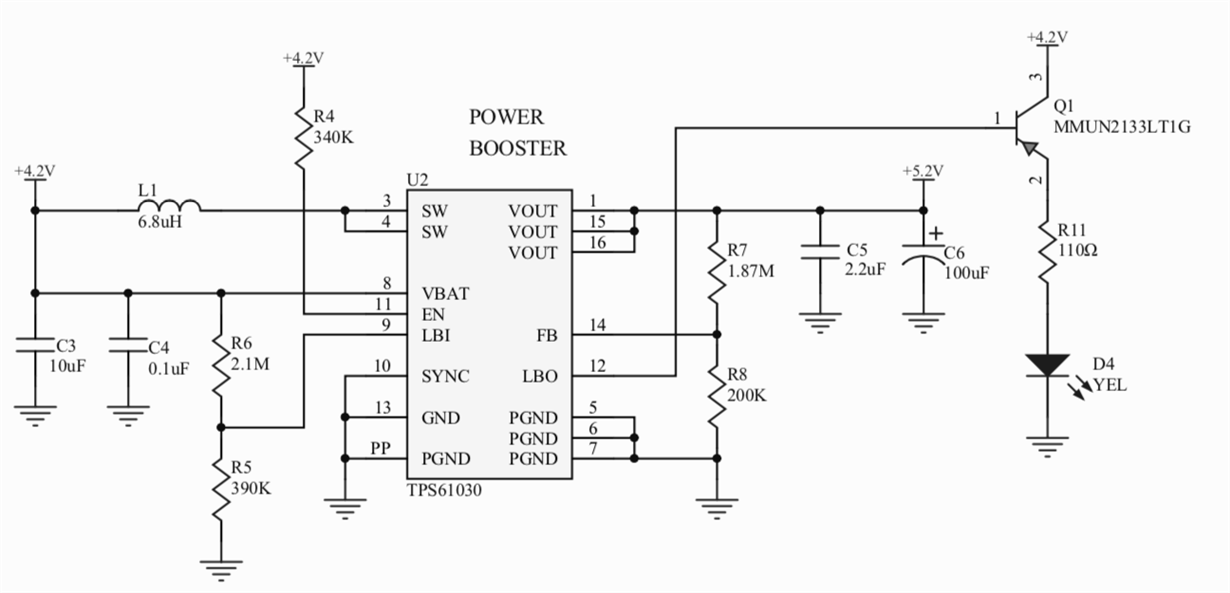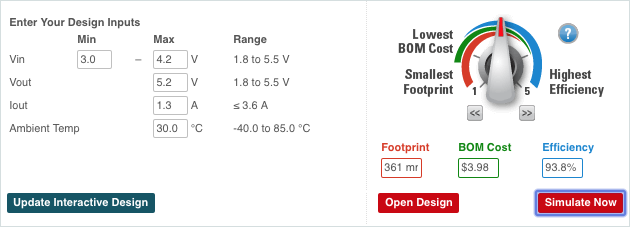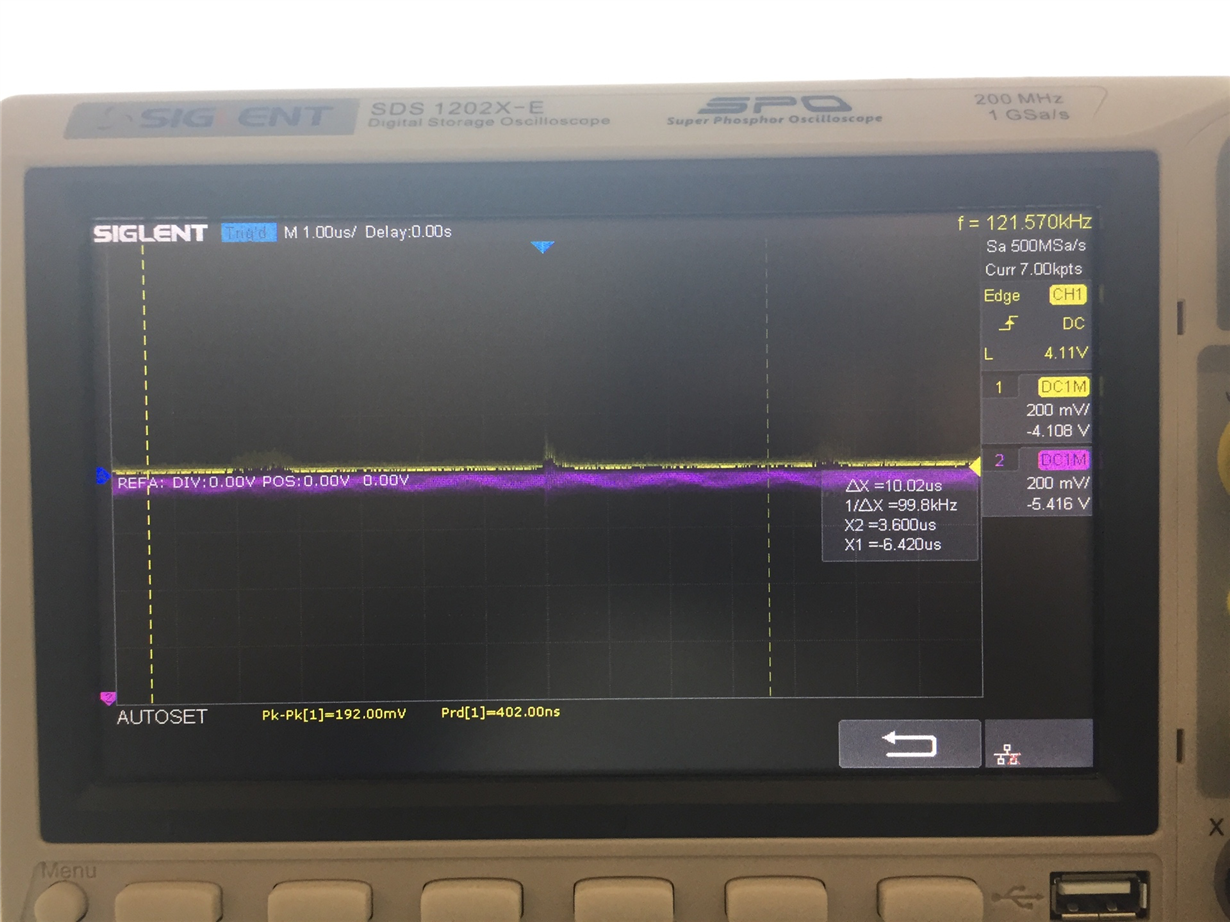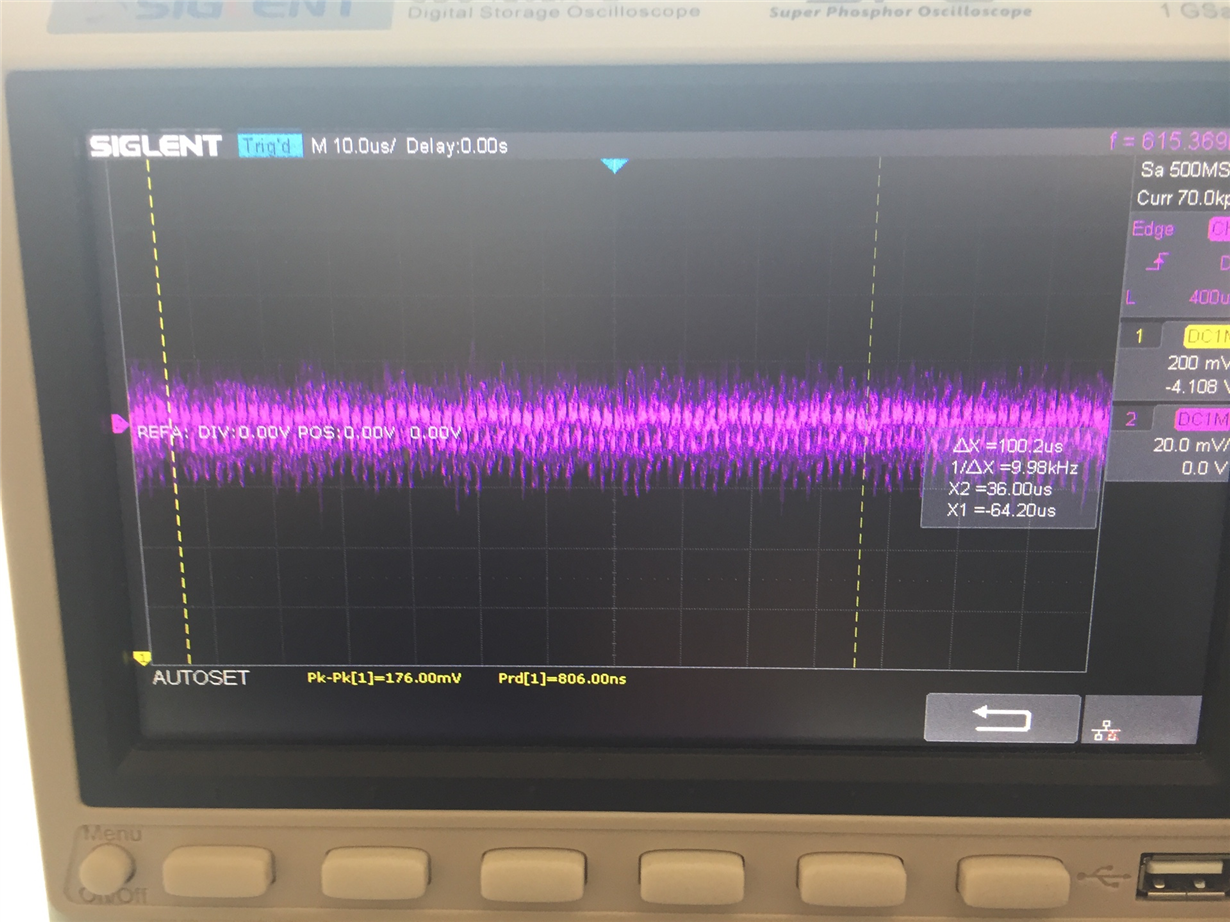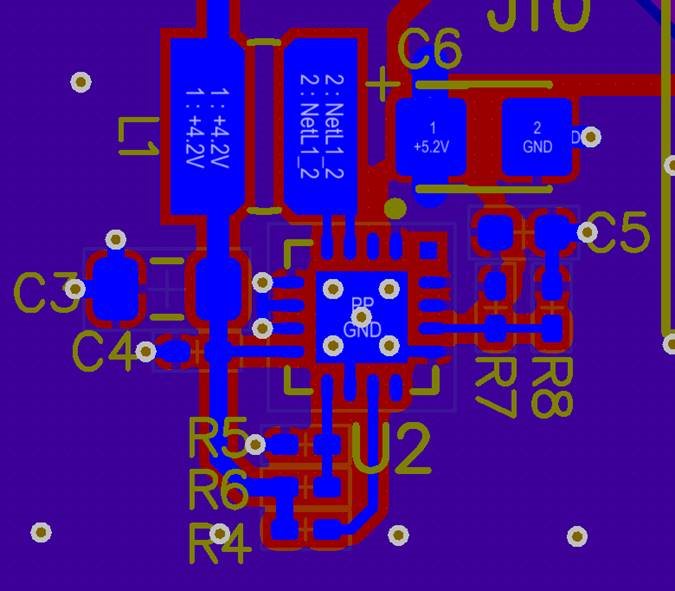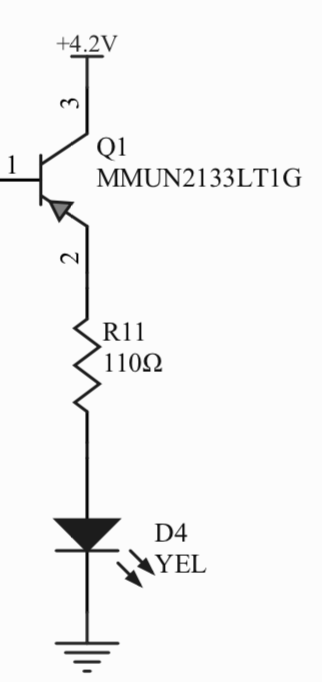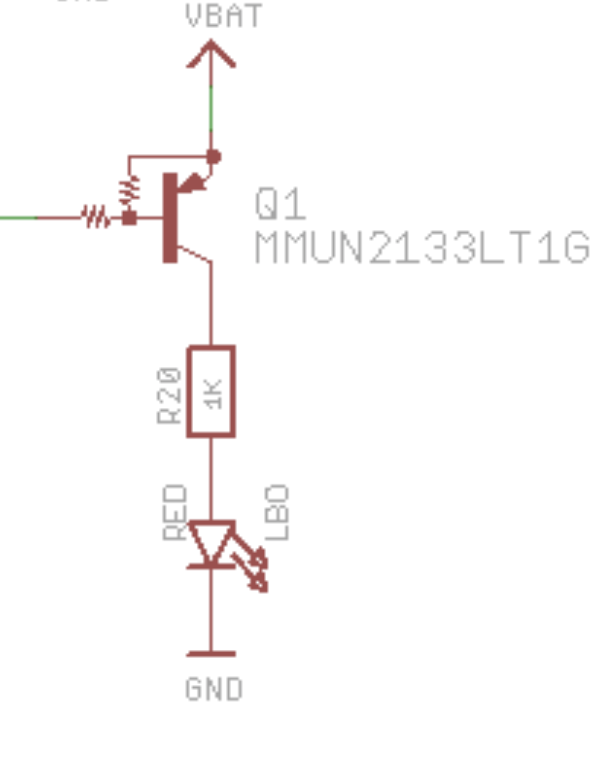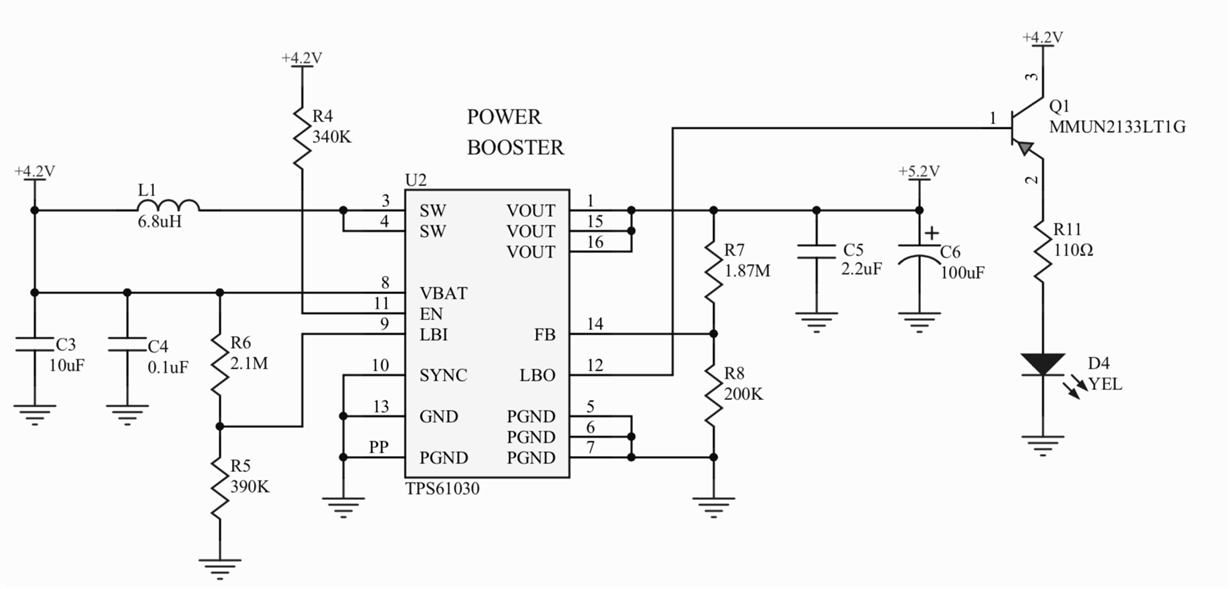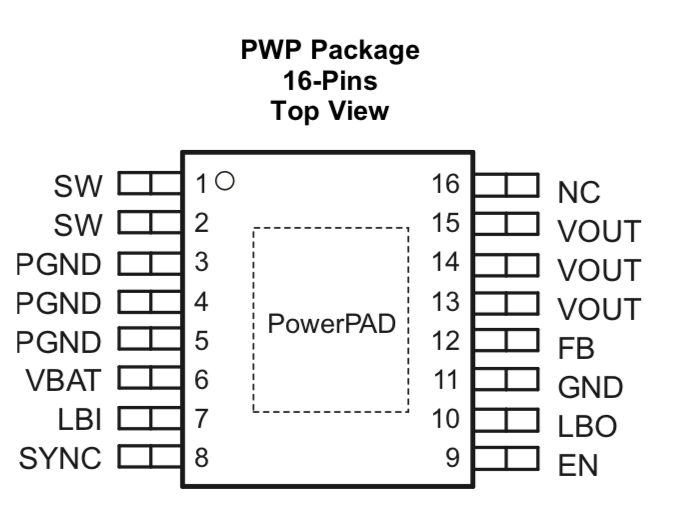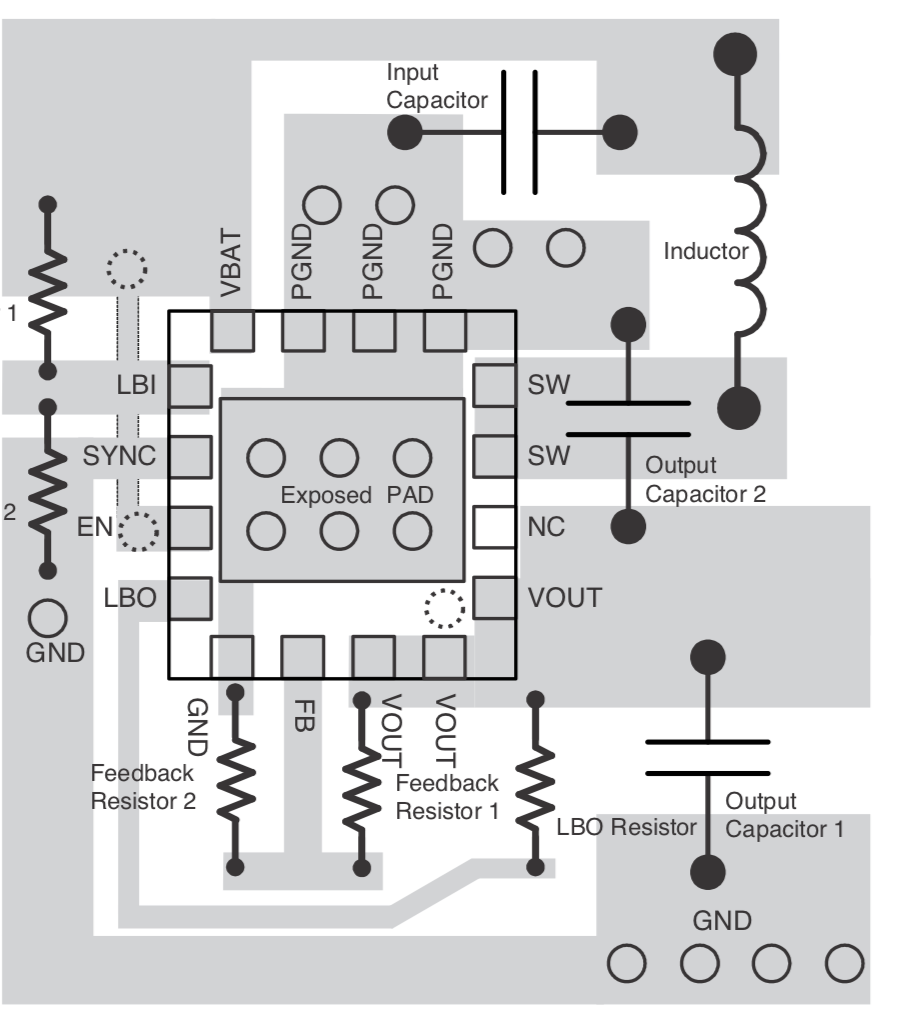Hello fellow engineer,
I was told I was going to get a call from you guys for the past three days, but then today I got an email directing me to web sight where they suggest I ask my question here instead. That was kind of rude of your company, but okay.
So I'm using your TPS61030 chip in my circuit as shown below, but the circuit was not producing enough amps to run my system. Below is figure of my circuit with your TPS61030 IC chip.
I then found out your web sight has a circuit simulator for this particular chip, that depending on your input values it makes a circuit for you, which is nice. Here is the your websites simulator for reference: https://webench.ti.com/webench5/power/launch_wb.cgi?part=TPS61030&fromdisty=digikey
Then here are my input values for that web sight
Then this is the circuit it pumped out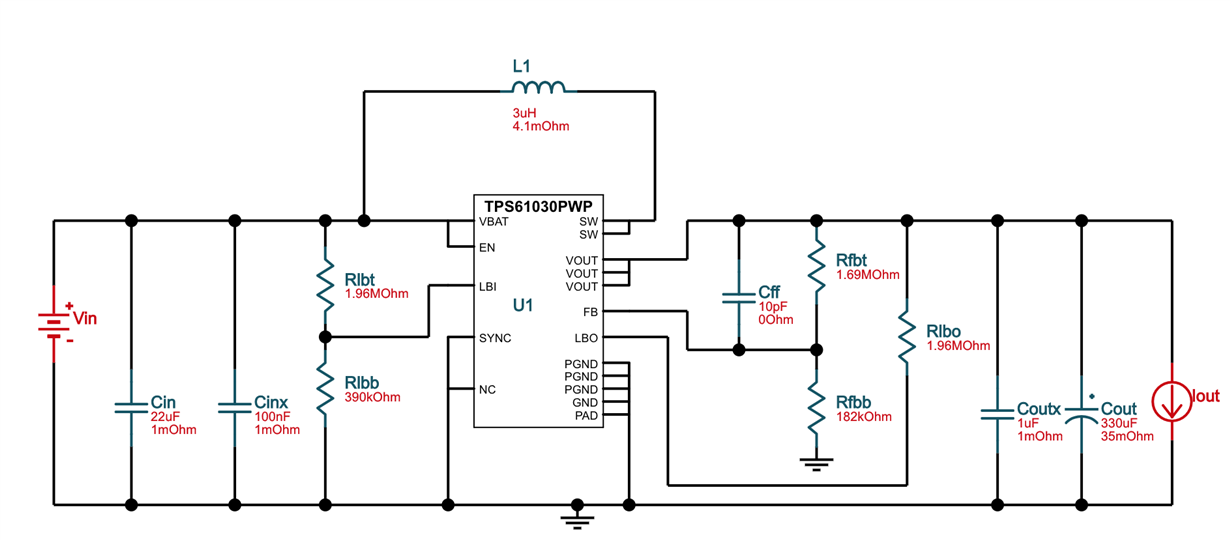
So it looked like to me that all I needed to do was replace a few values of the chips around the TPS61030 IC chip. So I switched out the R4 340K ohm resistor, in my circuit, to a 200K ohm resistor, I also switched in a 330 uF capacitor for C6, and a 3.3uH inductor for L1.
I then tested this to find out that your TPS61030 IC chip would only produce the amps I needed if given 3.7 V or over. But I needs it to produce up to 1.3 Amps of current with an input voltage as low as 3 V, like I inputed into your online circuit simulator. What is going wrong and how can I fix this? I'm hoping that I can just replace the values of certain chips rather than redoing the schematic on my new PCB. Once this problem is solved I will be able to finish my senior design project at USU and begin manufacture of my product; therefore, buying in bulk from you guys on various parts. Thank you for the support! Please give me a call or email me if you have any questions.
Best,
Kai Gull
kaigull@sbcglobal.net
(630)740-9189


